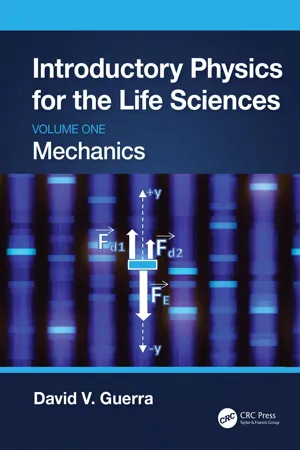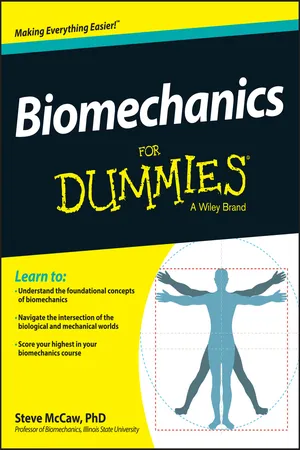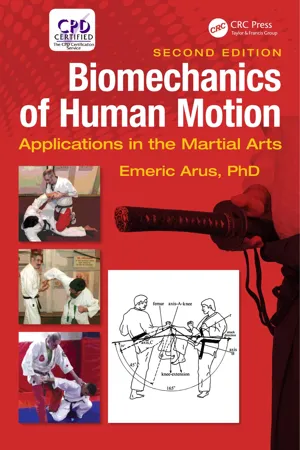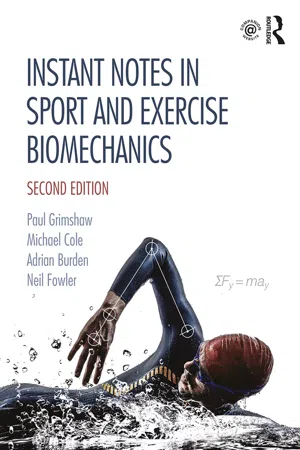Physics
Unbalanced Torque
Unbalanced torque refers to a situation where the net torque acting on an object is not zero, causing the object to rotate. This imbalance can result from unequal forces acting at different distances from the pivot point, leading to rotational motion. In essence, unbalanced torque leads to a change in an object's rotational speed or direction.
Written by Perlego with AI-assistance
Related key terms
Related key terms
1 of 4
Related key terms
1 of 3
5 Key excerpts on "Unbalanced Torque"
- David V. Guerra(Author)
- 2023(Publication Date)
- CRC Press(Publisher)
3 Torque and Rotational Equilibrium
DOI: 10.1201/9781003308065-33.1 Introduction
In some situations, a force is applied using a tool like a wrench or a screwdriver and a twisting force, called a torque, is produced. These twisting forces are central to the understanding and analysis of some objects in equilibrium. In this chapter, the concepts of torque will be studied and then applied to the analysis of systems in rotational equilibrium.- Chapter question: A person suspends a block of mass m from his or her hand, as depicted in Figure 3.1 .
FIGURE 3.1 Diagram of an arm.Assuming their forearm has a mass mA , is the force of tension in their bicep muscle equal to, greater than, or less than the sum of the weight of their arm and the weight of the object? To answer this question, the concepts of torque and rotational equilibrium will be developed and they will be applied at the end of this chapter to answer this question.
3.2 Torque
Torque is a twisting force, which is denoted by the Greek letter tau (τ). When opening the lid of a jar, the more force you apply the more twisting force (torque) you apply to open the jar. As you may also know from experience, if you are trying to loosen or tighten a bolt with a wrench, the harder you pull on the wrench, the force (F), the more torque there is on the bolt. But sometimes the bolt will not loosen no matter how hard you pull on the wrench. To loosen the bolt you can get a longer wrench or even slip a pipe on the end of the wrench. So, it is clear that the torque depends not only on the force applied but also on the distance away from the rotation point at which the force is applied.In the previous example, the angle between the force and the distance away from the rotation point is assumed to be perpendicular as shown in Figure 3.2 , but that is not always the case. So, the torque (τ) is defined as the product of the applied force (F) and the perpendicular distance (r ⊥- eBook - ePub
- Steve McCaw(Author)
- 2014(Publication Date)
- For Dummies(Publisher)
V .A New Angle on Newton: Angular Versions of Newton's Laws
Newton's laws of motion (see Chapter 6 ) explain that an unbalanced force causes an acceleration of a body, meaning the magnitude of the acceleration is proportional to the magnitude and direction of the unbalanced force and inversely proportional to the body's mass, and that forces equal in magnitude and opposite in direction are applied to the two bodies interacting to produce the force. In most human motion, the mass of the body stays constant, and only the motion of the body can change.Torque (see Chapter 8 ) is the turning effect of a force. If an applied force does not pass through a specified axis of rotation, the force has a moment arm around the axis and creates a torque on the body. When more than one torque acts around an axis, calculating the net torque at the axis (ΣT axis ) shows if an Unbalanced Torque (ΣT axis ≠ 0; see Chapter 8 for more on calculating net torque) is present around the axis. Newton's laws of motion explain the effect of an Unbalanced Torque on the angular motion of a body.The two main points to remember in looking at Newton's laws for angular motion are that the moment of inertia — the resistance to changing angular motion — is not necessarily constant for a body, and a force must have a moment arm to produce a turning effect on a body. In the following sections, I explain Newton's laws of angular motion.Maintaining angular momentum: Newton's first law
Newton's first law, also known as the law of conservation of angular momentum, specifies that an unbalanced external torque causes a change in the angular momentum of a body. Angular momentum is the product of the moment of inertia (I ) and the angular velocity (ω), or H = I - eBook - ePub
Biomechanics of Human Motion
Applications in the Martial Arts, Second Edition
- Emeric Arus, Ph.D.(Authors)
- 2017(Publication Date)
- CRC Press(Publisher)
The conditions for a body to be in equilibrium under angular motion have been stated earlier. Now, how can we calculate equilibrium? The majority of motions involve torque. But torque involves moment of inertia, lever(s), and angular acceleration. The torque is apparent when the body has contact with a force and also has contact with the center of the rotation that is connected to the line of action where the force is activated. In this case, we speak about torque, which we will describe later.But what about a body that has no torque, for example, a man running with a constant speed in a circle, which, let us say, has a diameter of 20 m. In this case, how do we know that he lost equilibrium? Just by watching the man and eventually seeing him tumbling several meters, we realize that he is losing balance.How can we calculate those short meters when he lost the balance? In this case, even if the force is present, because there is a (presumed) constant acceleration, we should use the linear kinematic calculations. You may be asking why we do not use the rotational kinematic calculations.In our case, a man who represents a point mass is extremely minuscule in relation to that circle of 20 m diameter and basically he is running in a straight line where the curves have a very large radius from a point that we can consider to be a fulcrum. That is why we use the following equations that are shown under the following section. When the athlete runs around the circle, we have the following forces.There is centripetal force acting from the athlete toward the imaginary center of the circular path. Now, for the athlete to rebalance his position, the frictional force should act away from the center of the circular path. The normal force of the athlete acts vertically upward and has a magnitude that is equal to his weight. Then, the normal force N = m ⋅ g. The frictional force (f ) acting on the athlete is μ ⋅ m ⋅ g . The centripetal (radial) force F rad = m ⋅ r ⋅ ω2 or m ⋅ v 2 /r.For the athlete to be in equilibrium, the net force acting on the athlete must be equal to zero. We take a negative (–) sign in the direction toward the center. Then, –F rad + f = 0. Continuing our calculations, we obtain m ⋅ r ⋅ ω2 = m ⋅ g or (m ⋅ v 2 /r = mg - eBook - ePub
OAT Prep Plus 2023-2024
2 Practice Tests + Proven Strategies + Online
- (Author)
- 2023(Publication Date)
- Kaplan Test Prep(Publisher)
rotational equilibrium to occur, the sum of the torques in both these directions must be equal. Since torques causing a rotation in the clockwise direction are negative and torques causing counterclockwise rotations are positive, we can also say that the sum of all the torques must be zero:Στ = 0This is called the second condition of equilibrium.Example: A seesaw with a mass of 5 kg has one block of mass 10 kg located 2 meters to the left of the fulcrum and another block located 0.5 m to the right of the fulcrum. If the seesaw is in equilibrium:a. find the mass of the second block. b. find the force exerted by the fulcrum.Solution: a. To find t, take the point of the fulcrum as the pivot point. This way the weight of the seesaw will be eliminated from the equation because r = 0 for the center of the seesaw, and the weight of it to the right cancels the weight of it to the left. Call the 10 kg mass object 1 and the block whose mass is unknown object 2.b. To find the normal force, N, exerted by the fulcrum, combine all vertical forces such that ΣFy= 0. There is the upward force exerted by the fulcrum and the downward weights of the seesaw and the two masses. Don’t forget that W = mg. Taking “up” as positive:Motion
Translational Motion
Translational motion is defined as motion in which there is no rotation. An example of translational motion is a block sliding on an inclined plane. With Newton’s three laws and enough information about initial conditions, you can solve any translational motion problem. - eBook - ePub
Instant Notes in Sport and Exercise Biomechanics
Second Edition
- Paul Grimshaw, Michael Cole, Adrian Burden, Neil Fowler(Authors)
- 2019(Publication Date)
- Garland Science(Publisher)
the second condition of equilibrium states that the sum of all the torques acting on an object is also zero. Since the second condition of equilibrium is related to torque or turning moments we can write the second condition of equilibrium as:The sum of the anti-clockwise moments and clockwise moments about a point (rotational point) is equal to zero.Since we know that torques cause rotation and are vector quantities (with magnitude and direction) we can use this knowledge to expand the second condition of equilibrium as follows:where:Σ ACWM + Σ CWM = 0Σ = the sum ofACWM = anti-clockwise moments (+ ve)CWM = clockwise moments (–ve)In this context, it is important to point out that this is referring to a system of torques about a common axis of rotation. Hence, it is important to use the same origin (point of rotation) for anti-clockwise and clockwise moments in the calculation of the second condition of equilibrium. In the example in Figure C3.5 , we had a system with two moments (remember that we are ignoring the moment caused by the weight of the radius and ulna) that were acting about a single axis of rotation (a common axis or origin), which was the elbow joint.Consider the example in Figure C3.5 , with the arm held in the 90-degree flexion position. The moments for this example (ignoring radius/ulna weight) can be seen in Figure C3.6
Index pages curate the most relevant extracts from our library of academic textbooks. They’ve been created using an in-house natural language model (NLM), each adding context and meaning to key research topics.
Explore more topic indexes
Explore more topic indexes
1 of 6
Explore more topic indexes
1 of 4




